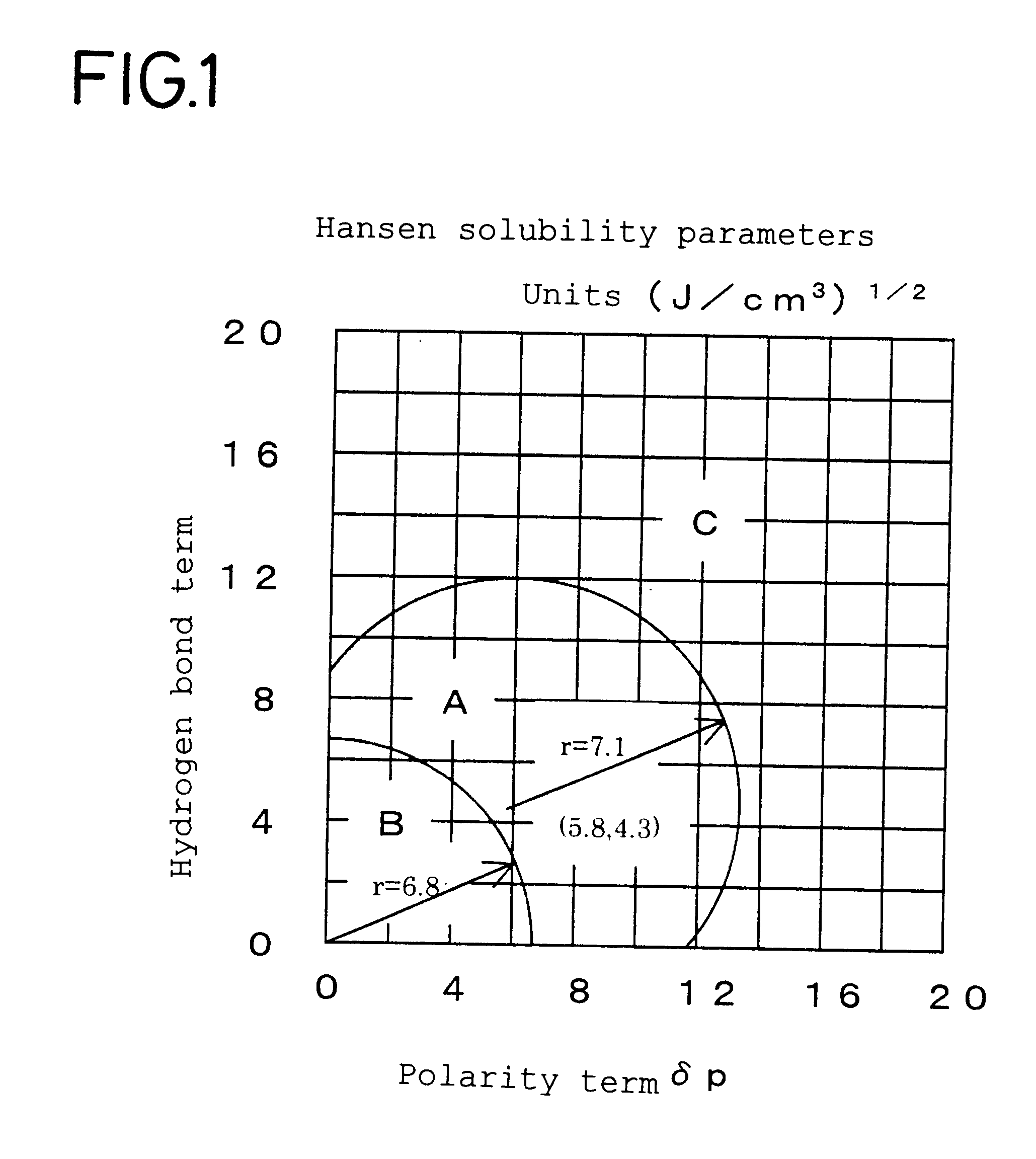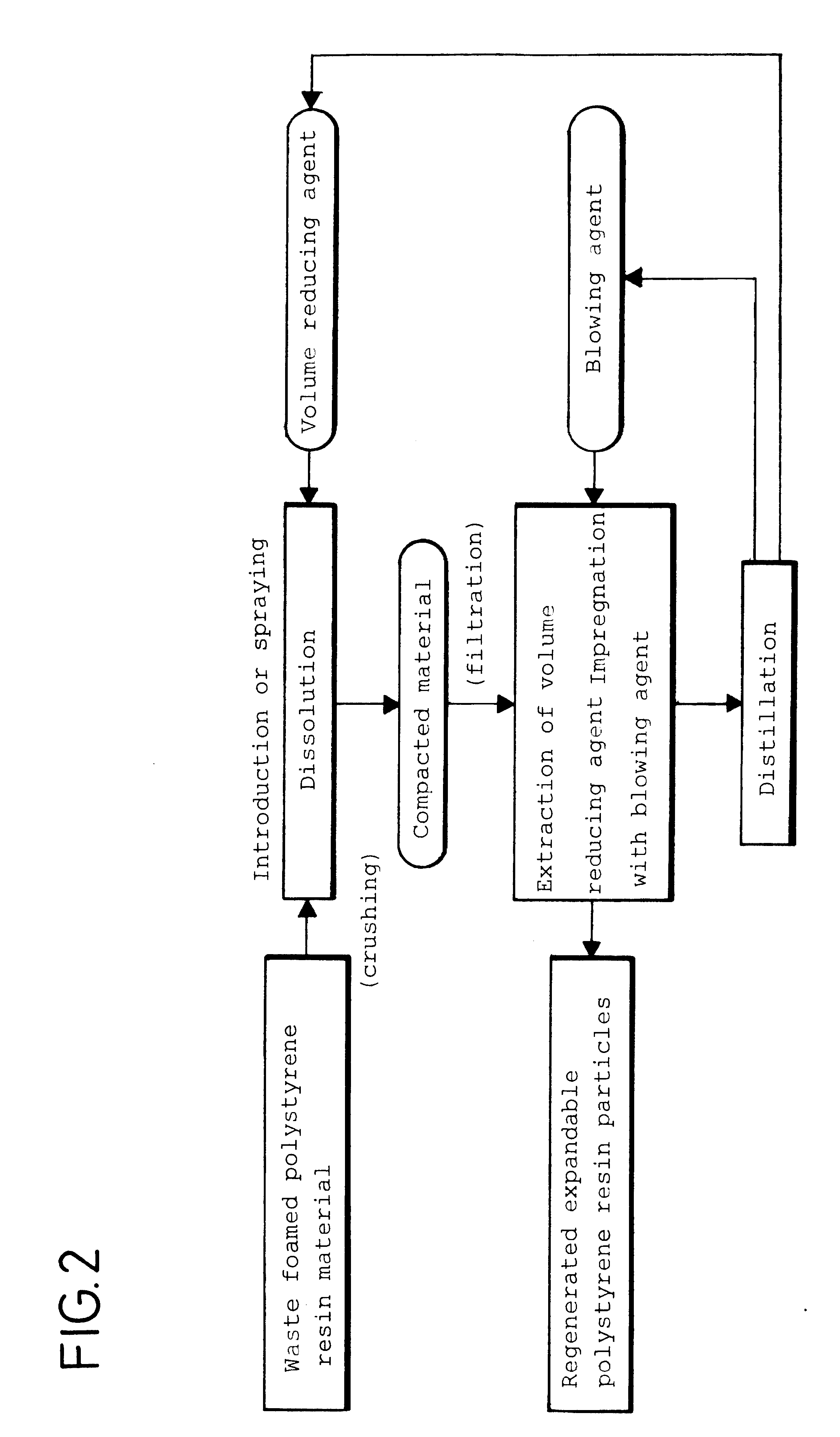Process for producing reclaimed expandable polystyrene resin particle
a technology of expandable polystyrene and resin particles, which is applied in the direction of plastic recycling, recycling and recovery technologies, etc., can solve the problems of difficult to use such equipment at the site where waste is produced, and large specific volume of expandable polystyrene, etc., to achieve the reduction of heat history, reduce the deterioration of regenerated resin, and simplify the process
- Summary
- Abstract
- Description
- Claims
- Application Information
AI Technical Summary
Benefits of technology
Problems solved by technology
Method used
Image
Examples
example 9
To a compacted material prepared in the same way as in Example 8, n-hexane was added in an amount half of the amount of the compacted material. The mixture was kneaded for 1 minute at room temperature (about 20.degree. C.) in a mixer. The same operation was repeated twice with the liquid portion renewed. The compacted material changed from being transparent to white and semitransparent, and its adhesion reduced. The compacted material was extruded in the form of a string by a plunger extruder and cut into particles with a diameter of 1 mm by a strand cutter. Thereafter, the particulate material was dipped in n-pentane. The dipping treatment was performed for 20 hours at room temperature. Then, a foaming test was carried out. As a result, substantially spherical expandable resin particles with an expansion ratio of 49 were obtained.
PUM
| Property | Measurement | Unit |
|---|---|---|
| softening temperature | aaaaa | aaaaa |
| temperature | aaaaa | aaaaa |
| size | aaaaa | aaaaa |
Abstract
Description
Claims
Application Information
 Login to View More
Login to View More - R&D
- Intellectual Property
- Life Sciences
- Materials
- Tech Scout
- Unparalleled Data Quality
- Higher Quality Content
- 60% Fewer Hallucinations
Browse by: Latest US Patents, China's latest patents, Technical Efficacy Thesaurus, Application Domain, Technology Topic, Popular Technical Reports.
© 2025 PatSnap. All rights reserved.Legal|Privacy policy|Modern Slavery Act Transparency Statement|Sitemap|About US| Contact US: help@patsnap.com


